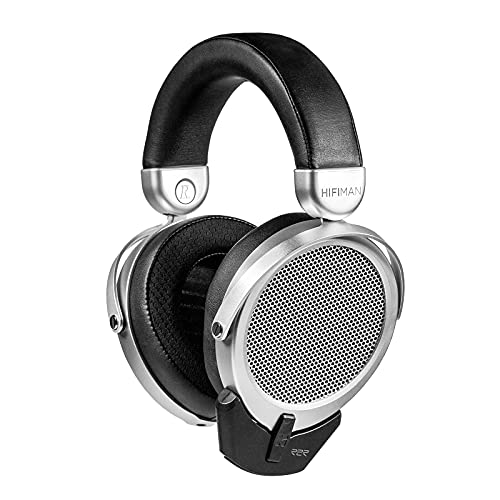10 Factors To Know To Know Planar Magnetic Speakers You Didn't Learn A…
페이지 정보

본문
 Planar Magnetic Speakers
Planar Magnetic SpeakersPlanar magnetic speakers convert electrical signals into sound by using flat diaphragms. They are well-known for their precision and clarity and also their low distortion. They also have a broad frequency response, which makes them easy to listen to.
 Dynamic drivers have larger and more rigid diaphragms than thin and ultra-light ones used in planar magnetic speakers. This hinders their ability to move and accelerate rapidly which can result in distortion of the sound.
Dynamic drivers have larger and more rigid diaphragms than thin and ultra-light ones used in planar magnetic speakers. This hinders their ability to move and accelerate rapidly which can result in distortion of the sound.These are simple to construct
Many people believe that building planar magnet speakers is a challenge. However they are incredibly simple to build. The trick is to follow the instructions and build a well-engineered speaker. The result will be an audio system that is of top quality and will be able to compete with any that is available commercially. Planar magnetic speakers are simple to construct and provide better sound quality than traditional dynamic drivers. They provide superior clarity, a wider dynamic range and controlled directivity which all contribute to a more immersive listening experience.
Contrary to conventional loudspeakers, which project sound in circular wave fronts, planar magnetic speakers emit flat waves that are directional. This enables them to reproduce sounds at very low frequencies, which can be difficult for traditional speakers to achieve. Their extremely precise imaging brings music to life, planar magnetic speakers making conventional speakers sound slow in comparison.
A planar magnetic drive generates a sound by using a thin metal sheet suspended between two conductive plates that are stationary. The audio signal runs through the panel, which quickly changes between negative and positive. The magnetic array moves the panel's negative side back and forth and causes the diaphragm to move. The result is a great dynamic response, and a broad soundfield that is not distorted.
The maximum range of an excursion for a planar magnet speaker is among the most important aspects of its performance. It is the maximum distance that a speaker can travel before it starts to distort. This is usually measured at a specific frequency and at a given output level. If you want to hear the 20-Hz bass, you'll need an audio system that has an excursion of around 1 millimeter.
A reliable planar magnet driver should be able to maintain structural integrity while enduring high excursion. It should be able to disperse heat effectively and handle a substantial amount of power. To meet these goals the speaker's voice coil must be with sufficient thickness and size. The voice coil must also be wrapped in a conductive material that is capable of conducting electricity.
They efficiently disperse heat.
This is an important aspect of any speaker, especially one that is planar magnetic. The voicecoil is in close proximity to the magnet array and has a high flux density across the gap. The voicecoil generates heat. voicecoil and must be emitted to prevent distortion and damage. Radiation and convection are two ways that the voicecoil is able to get rid of heat. Radiation is preferred because it doesn't have the pumping effects of cone movement. However, it should be handled with attention and the design should be able to handle the power that is used.
The first step is to make sure that the gap between the voicecoil and the array is at a minimum of 1 millimeter. This is crucial, since the gap could cause very unpleasant distortion if greater than this. The gap must be large enough for the voicecoil's movement without hitting the rear plate. This is why the wide gap designs favored by many manufacturers are inefficient and will only work well at low frequencies.
Put a magnet in the gap, and then measure the resistance. The greater the resistance, the less heat will be dissipated, and the higher the chance of distortion. The lower the resistance is the more efficient and free of distortion the speaker will be.
Planar magnetic speakers can reproduce the upper octaves of sound with incredible accuracy, however they aren't able to reproduce the lower frequencies because they require a very large diaphragm. This is why many planar magnetic speakers use a tweeter and woofer in combination. This allows them to cover a larger frequency range with less distortion.
Planar magnetic drivers are renowned for their low distortion and great bass. The dipole design means that the drivers radiate equal amounts of energy in both directions and have an inverted phase. This is an advantage over conventional drivers that are subject to mechanical distortion and strong Q resonances.
They can handle lots of power
Many people are worried that closed-back planar magnetic headphones magnetic speakers will not be capable of handling the power they need however the reality is that they do. The "voice coil" has a greater surface area than a dynamic driver and will therefore be able to disperse more heat. The diaphragm is thin and light, helps to reduce distortion.
It is important to keep in mind that a planar magnet speaker will require lots of power to create an excellent sound. They're not able to efficiently disperse energy as a conventional speaker, so they are able to be sensitive to the way the room is installed. They are also directional and if you are listening from just a few degrees away, the volume of sound can be significantly reduced.
Another factor that affects their capacity to handle a lot of power is the fact that they are not efficient. They have lower impedances and therefore require more power to achieve the same amount. Additionally, they are prone to magnetic saturation, which could cause them to distort.
In determining the maximum excursion for a planar magnet speaker is an excellent way to determine its capacity to handle high-power. This is the length the diaphragm will travel before it hits the magnet array and begins to distort. The best planar magnetic speakers can reach the distance of around 1 mm before this occurs.
Planar magnetic speakers also offer a greater frequency range than cone drivers. This can be advantageous in certain circumstances. They can reproduce a greater number of frequencies, which can improve the quality of music and sound effects. This makes it easier to differentiate between instruments and vocals in a song.
The most effective planar magnetic speakers can reproduce a broad spectrum of frequencies, including the bass frequencies. This can be a huge benefit for those who want to enjoy music in a variety of environments. These speakers are more expensive than traditional speakers, but offer a unique immersive experience. These speakers are also good for home theater systems.
The direction of the arrow is important
When an electrical signal is placed on the conductive trace patterns, the magnetic field creates diaphragm movement that produces sound waves. The movement is much more precise and controlled than with traditional cone drivers, which allows for a larger frequency response. This allows planar speakers to produce more clarity and detail the music.
These diaphragms that are flat can be constructed to be dipole (radiating equally in front and back like electrostatics and Maggies) or Monopole (radiating only in the direction of forward, more like conventional dynamic speakers). This flexibility offers designers the possibility of a variety of options for wall-mounted or in-wall loudspeakers that could offer exceptional performance at reasonable cost.
The diaphragm inside a planar magnetic driver is typically made from an ultra-thin, light polymer that is coated with a circuit made of copper that conducts electricity. The diaphragm is enclosed by magnets in bars that are separated. These arrays of magnetic bars create an extremely strong magnetic field that can attract and disperse air particles in the diaphragm. The magnetic fields assist in disperse heat away from the speaker without straining the voice coil.
Planar magnetic speakers have greater sensitivities than cone speakers that are conventional and can handle large amounts of power without overheating. They also have lower impedance, meaning they require less amplification in order to achieve the same levels of listening. They can reproduce a full spectrum of audio frequencies, including highs and bass. They are often enhanced with subwoofers with boxed enclosures, which are able to reproduce low-frequency sound with greater precision.
One drawback of single-ended magnetic loudspeakers is their poor damping. This can result in high-Q resonances at the low frequency of the speaker's frequency response, which can cause coloration of the sound. This problem can be solved by a hybrid design which combines the benefits of both dipole and planar technologies.
One of the most important elements that determine the performance of a planar magnetic speaker is the correct positioning in a room. A variety of sound characteristics are affected by this, such as the bass response, imaging and the width and depth of the soundstage. It is important to avoid toe-in, since it can adversely affect the midrange and highs. The speaker should be placed in the area where the central image is narrowest.
- 이전글10 Misconceptions That Your Boss May Have About Magnetic Planar 24.04.11
- 다음글This Week's Most Popular Stories About Planar Magnetic Closed Back Headphones 24.04.11
댓글목록
등록된 댓글이 없습니다.

